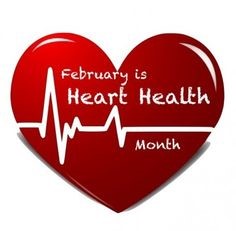
As I approach February 19, 2023—the tenth anniversary of open heart surgery to implant my top hat mechanical aortic heart valve—I remain eternally grateful for God’s interventions leading me to a diagnosis of aortic stenosis and Johns Hopkins Hospital for life-saving surgery. This experience makes me tender towards the February heart days reserved to save more lives and promote heart healthy living:
- American Heart Month.
- February 1 to 7, Women’s Heart Week.
- February 3, National Wear Red Day® to raise and spread awareness to help eradicate heart disease and stroke in millions of women.
- February 7 to 14, Congenital Heart Disease Awareness Week.
- February 22, Heart Valve Disease Awareness Day.
Want to subscribe to receive blog updates sign up today!
According to the American Heart Association, 655,000 Americans die annually from heart and cardiovascular diseases. Forty-three million women have some type of heart disease. Two to three million people have Congenital Heart Disease (CHD) and as many as 11 million have heart valve disease that kills around 25,000 people per year.
Here’s the good news: 87 percent of all heart issues are believed to be preventable. Plus, as medical care and treatment have advanced, people with CHD live longer and healthier. Valve disease can usually be successfully treated in patients of all ages. However, positive outcomes call for people to practice self-care and, if necessary, make lifestyle changes.
Most of us already know that being physically active, eating healthy foods, getting enough sleep, not smoking, and finding healthy ways to reduce stress can help prevent heart disease. But many of these things are easier said than done and some are especially difficult for people with dwarfism and disabilities. Take, for example, the advice to be physically active. While diet and exercise are touted as our greatest weapon and reduce our chances of heart disease by as much as 80 percent, the recommended 150 minutes of heart-pumping physical activity per week may not be feasible.
Yet not being able to walk briskly, do water aerobics, or play tennis doubles doesn’t take us off the hook. Being active is not an all-or-nothing thing. Physical activity is anything that moves our body and burns calories. Any amount of movement is better than none. And for those of us who are sedentary, sitting less is a great place to start along with walking and stretching.
It’s also important to know the five numbers that determine our risk for developing cardiovascular diseases: (1) total cholesterol; (2) HDL (good) cholesterol; (3) blood pressure; (4) blood sugar; and (5) body mass index (BMI). I never used to pay attention to these numbers, but now I ask for copies of blood work reports and for the numbers when my blood pressure is taken. Knowing whether a number is in or out of the healthy range is the best way to be pro-active in managing heart health. I’m as much a member of my health care team as any doctor or nurse.
If there’s something I can do to avoid a stroke or heart attack, I’m going to do it. How about you?
You may also want to read:
- Angela Muir Van Etten. “Thankful for Aortic Valve Replacement (AVR).” November 23, 2020. https://angelamuirvanetten.com/thankful-for-aortic-valve-replacement-avr/
- Chapter 23, “Aortic Valve Replacement,” in book II of Angela Muir Van Etten’s dwarfism memoir trilogy, PASS ME YOUR SHOES: A Couple with Dwarfism Navigates Life’s Detours with Love and Faith. https://angelamuirvanetten.com/pass-me-your-shoes/
- American Heart Association. https://www.heart.org/en/
- National Heart, Lung, and Blood Institute, National Institute of Health. https://www.nhlbi.nih.gov/education/american-heart-month
- Go Red for Women. American Heart Association. https://www.goredforwomen.org/en/get-involved/give/wear-red-and-give
- National Wear Red Day (February 3rd). https://nationaltoday.com/national-wear-red-day/
- Congenital Heart Disease Awareness Week (February 7 to 14). https://nationaltoday.com/chd-awareness-week/
- “Congenital Heart Defects.” Centers of Disease Control and Prevention. https://www.cdc.gov/ncbddd/heartdefects/index.html
- Heart Valve Disease Awareness Day (February 22). Alliance for Aging Research. https://www.valvediseaseday.org
